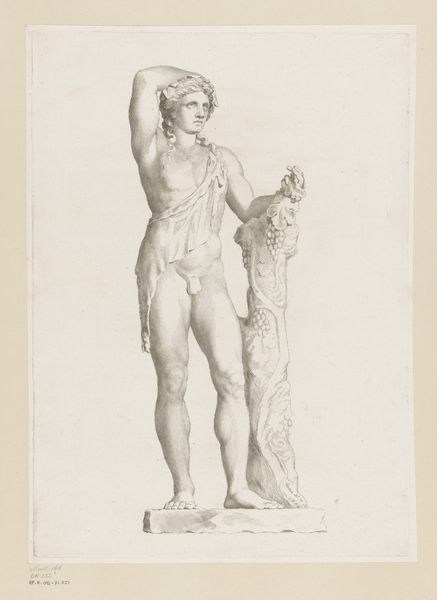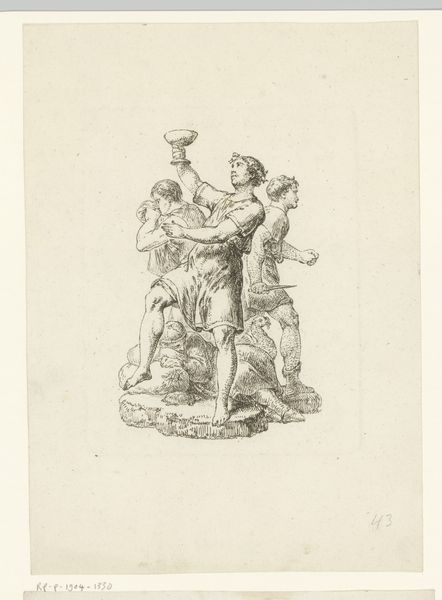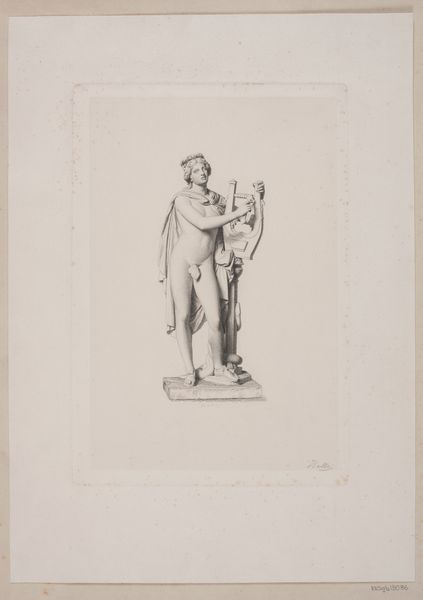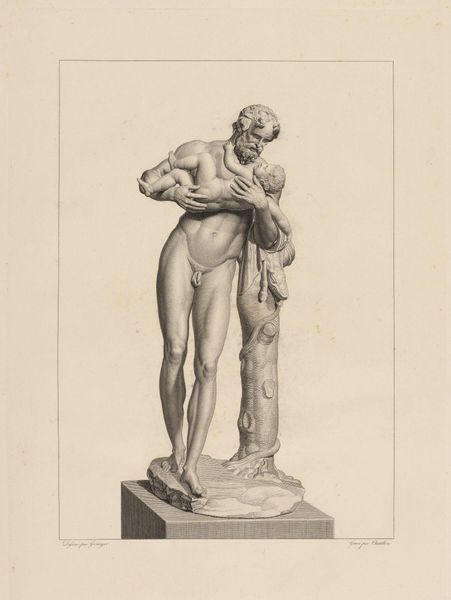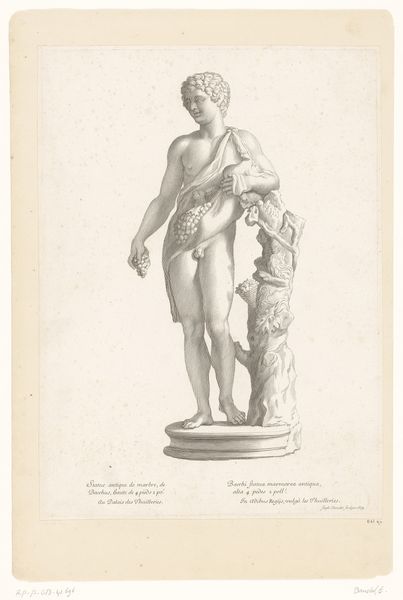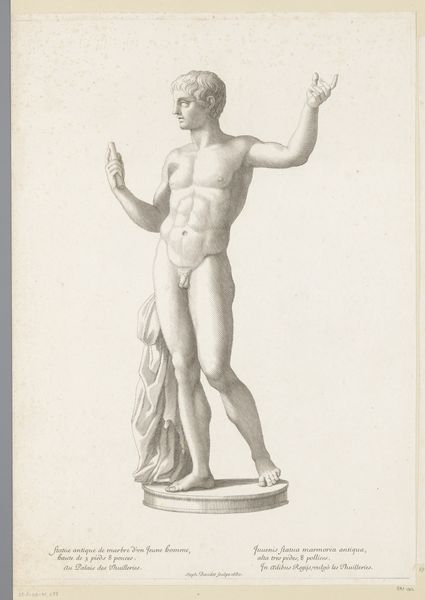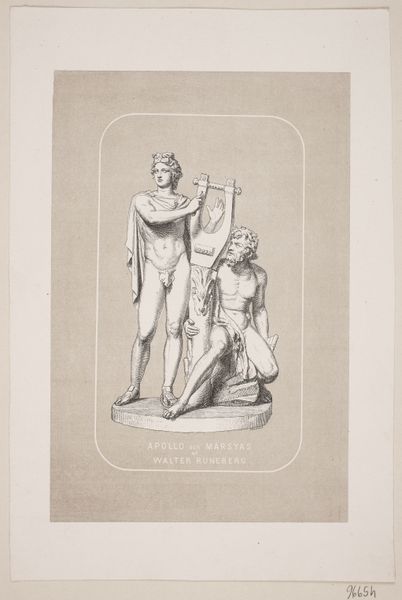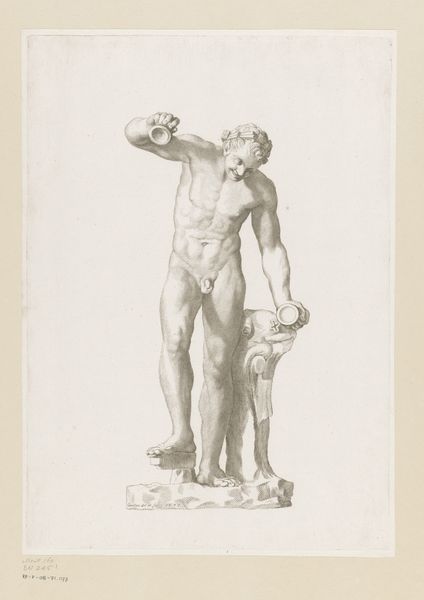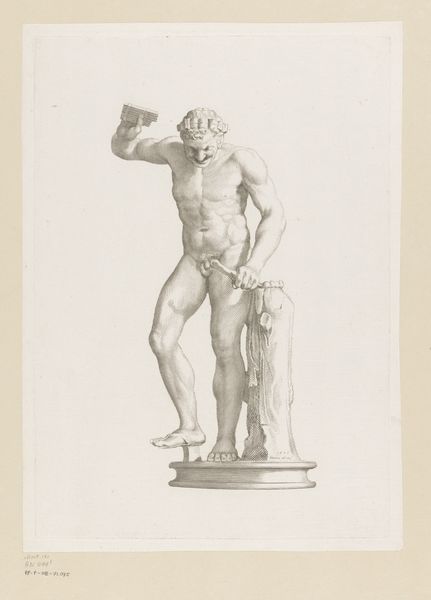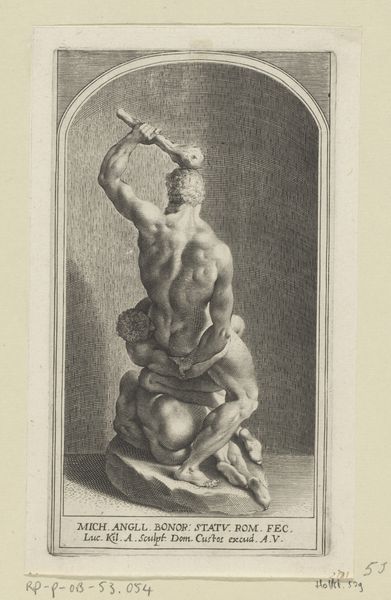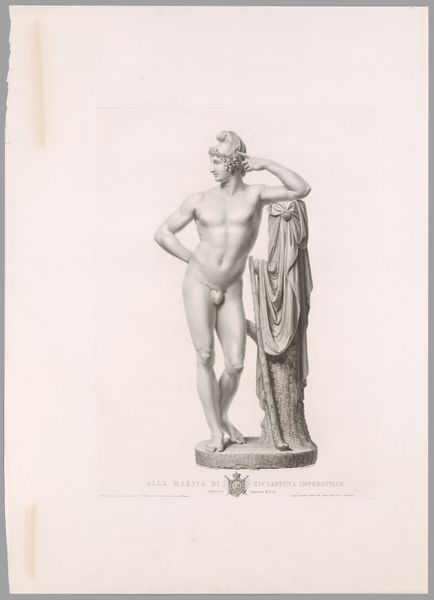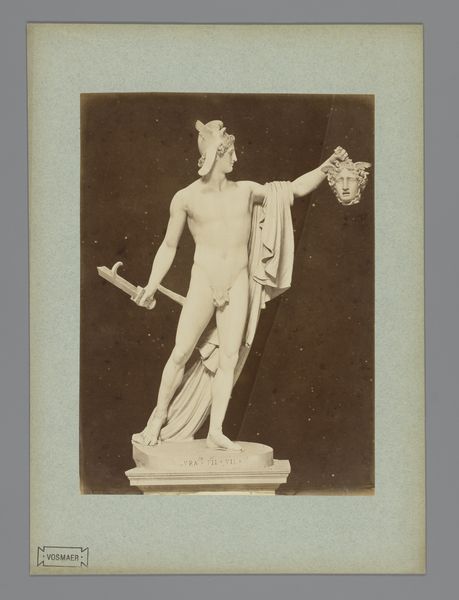
drawing, print, paper, ink, woodcut
#
drawing
#
allegory
# print
#
classical-realism
#
figuration
#
paper
#
ink
#
woodcut
#
history-painting
Dimensions: 178 mm (height) x 129 mm (width) (bladmaal)
Curator: This intriguing print from somewhere between 1820 and 1887, held at the SMK, is called "Apollo og Marsyas" by Johan Frederik Rosenstand. Editor: The linework immediately strikes me – precise, almost clinical. It's stark, with the pale paper and contrasting dark ink emphasizing the figures' strained dynamic. Curator: Absolutely. Rosenstand has rendered the scene with remarkable fidelity to classical ideals, hasn't he? We can certainly contextualize this through the artistic conventions and academic training of the period; artists strived for accuracy in their representations of mythology. Editor: And those mythic figures resonate even today. Apollo, standing upright and self-assured, seems to radiate confidence. The lyre, displaying a prominent hand, is almost heraldic. Marsyas, slumped and bearded, is a picture of… well, dejection, perhaps. It speaks to hubris and the cost of challenging authority, doesn't it? Curator: Exactly. That underlying narrative would've been familiar. The flaying of Marsyas by Apollo for daring to challenge him musically became an allegory. But also think of the role of academies in dictating acceptable styles and themes, particularly how art reinforced existing social and political hierarchies through such morality tales. Editor: I'm also intrigued by the seemingly nonchalant way Apollo is holding the instrument displaying the lyre's hand like a symbol of control or talent itself. The power of creative and skillful authority over the… uncontrolled, the barbaric, represented by Marsyas's more natural depiction, with a slight suggestion of a satyr in him with his beast-like face. Curator: It's fascinating how Rosenstand employs this classic rivalry as a symbol of civilization's triumph over the wild or base, and what that implied within the social consciousness. A complex network of power is visually displayed for the contemporary art audience. Editor: It makes you consider how these images and embedded symbols become these coded touchstones—visual reminders of social norms, competition, but ultimately the painful results of comparison. What does that imply for us today, constantly saturated with media and competing voices? Curator: That's it, I believe— the power and implications surrounding art's production that persist through our modern cultural frameworks. Editor: Indeed. Visual stories like this one hold such resonance, telling much more than simply the story of gods.
Comments
No comments
Be the first to comment and join the conversation on the ultimate creative platform.
